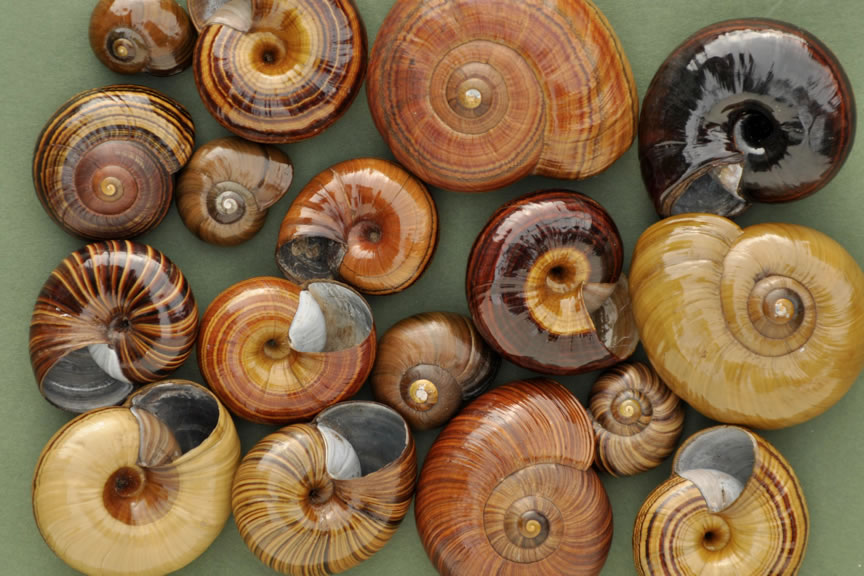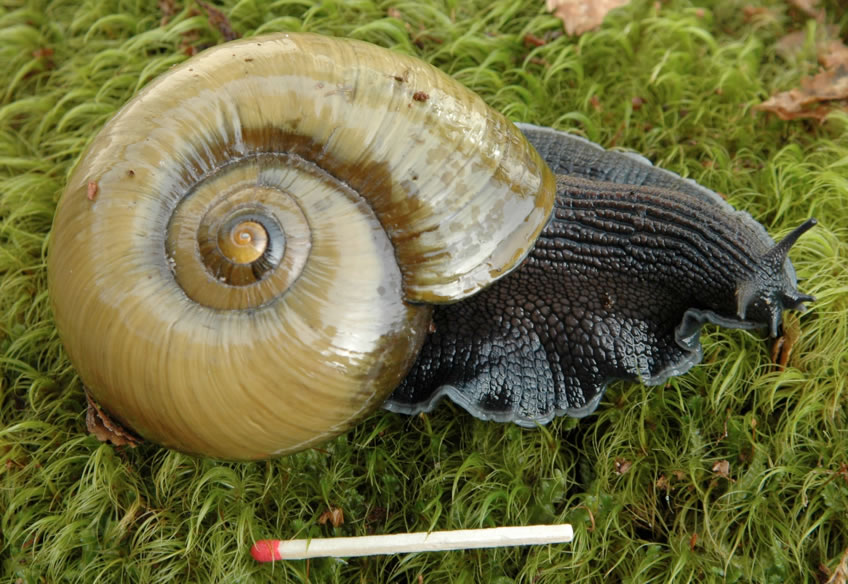|
|
| |
I have worked as a researcher with the NZ Wildlife Service and the NZ Department of Conservation (DOC) since 1981, and am still employed there, while carrying out PhD research part-time. In my holidays I work with my partner in the New Zealand subantarctic on a long-term population study on wandering albatrosses on Auckland and Antipodes Islands, the impact of fisheries by-catch and climate change on those albatrosses, and their taxonomic status.
I have spent a lot of time assessing the distribution, density, biology and conservation status of the large carnivorous land snail Powelliphanta, and designing and testing predator control techniques to provide DOC with ways to conserve the snails. I became interested in these beautiful giants years ago, because I frequently encountered them while tramping in the north-west Nelson mountains.
|

|
| |
My Research:
Powelliphanta are placed within the large southern family Rhytididae, which has a 'Gondwanan' distribution, including New Zealand, Australia, New Guinea and South Africa. The shells of many taxa are strongly patterned and brightly coloured, and have been used as the primary tool in identification. Most taxa were described on the basis of shell morphology in the 1930s and 1940s, producing a taxonomy of 10 species and 27 subspecies. An alternative classification reducing the number of species to two with four subspecies was published in 1978 but was considered contentious and failed to gain wide acceptance. However, it remains the most recent formal classification, and this has proved problematic as growing conservation and political attention focuses on the group.
Shrinking budgets for nature conservation are increasing the need to prioritize conservation efforts, and have led to a call to protect only “representatives” of the old New Zealand fauna. Within speciose groups such as Powelliphanta, such prioritization requires much greater certainty about the taxonomic and genetic structure of the genus than is currently available.
My study aims to provide a reliable classification which identifies as accurately as possible the diversity within Powelliphanta. I am using modern morphometrics (including computer-assisted measures of shape), allozymes and mitochondrial DNA to review and revise the genus. |
 Some of the exuberant diversity of shell colour and pattern in Powelliphanta Some of the exuberant diversity of shell colour and pattern in Powelliphanta
 Powelliphanta superba Powelliphanta superba
|
| |
|
|
|
|